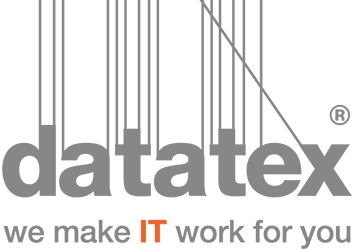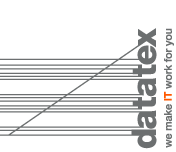
New perspectives for the textile industry in Europe
Interview with Graziano Nardi – Datatex South Europe Sales Director
 Despite the big changes in the global supply chain that redesigned its geography, Europe still keeps a leading role in this industry and in the list of the biggest exporters of textile products we still find Italy in 3rd place (after China and India), Germany in 4th place, Spain in 8th place, France in 9th place, Belgium in 10th place and Netherlands in 12th place (source: elaborations of the Economic Observatory Mise on GTA data). Moreover, in the complex post-covid scenario we are going through, some people hope for a reshoring of textile production in Europe. What’s your opinion about that? How do you see the current situation of the textile industry in Europe?
Despite the big changes in the global supply chain that redesigned its geography, Europe still keeps a leading role in this industry and in the list of the biggest exporters of textile products we still find Italy in 3rd place (after China and India), Germany in 4th place, Spain in 8th place, France in 9th place, Belgium in 10th place and Netherlands in 12th place (source: elaborations of the Economic Observatory Mise on GTA data). Moreover, in the complex post-covid scenario we are going through, some people hope for a reshoring of textile production in Europe. What’s your opinion about that? How do you see the current situation of the textile industry in Europe?
First, I have to say that the phenomenon of production delocalization has been a common feature in many sectors, and in the past big European industrial groups – not only textile – used to bet on offshoring as a way of defending their margins thanks to the new opportunities linked to higher flexibility and lower hourly labor costs. However, during the years, many people realized that the production replacement entails a series of high “hidden costs”, both from the point of view of increasing complexity in the company management, of increasing delivery times and costs, and of production quality control.
Hence, in the last few years, the market has returned to favor European suppliers, and companies held back delocalization and outsourcing, producing back home. I think that this phenomenon in textile is not transitory, and all the biggest European textile associations underline that manufacturing reshoring is not at all a marginal matter.
Since 1987 Datatex supports textile companies for the digitalization of production processes, and NOW ERP by Datatex has been established over the years as the best selling vertical management system for textile in the world. How do you think NOW can make the difference for a textile company? How does NOW ERP by Datatex differentiate from the other competitors and what is the added value offered against the other international generalist solutions?
An ERP for the textile world has to support the integration of all company processes, allowing the right planning of times and costs for each order and the best management of supplies; to optimize the warehouse and to plan the production in increasingly complex contexts with high standards.
Our specific experience in the textile sector and the technologies we use enabled us to realize a solution – NOW ERP – that mirrors the specificities of this industry, offering full control over the textile production, the quality of produced goods, the distribution, and the costs.
NOW ERP can integrate within the business environment, in total symbiosis with all the different users, in different areas and in different levels, then interfacing with the financial data managers, in order to support the management of all processes along the entire product lifecycle.
In the textile supply chain, there are specific and different production processes, but they all have a high degree of product variability, which is subject to sudden and continuous changes related to trends evolution, seasonality, and to the heterogeneity of sizes. Some of the main challenges that today’s textile market requires from an ERP and fulfilled by Datatex NOW are: help to anticipate the market trends, drive the strategic decisions, allow a reduction of transformation costs by verticalizing the processes along the supply chain, and support the product quality.
The textile companies that choose NOW by Datatex report many benefits (from the digitalization of the supply chain processes to traceability, from the reduction of stocks to the improvements in quality control, etc…). But here I would like to stress three main benefits of NOW ERP:
- Reduction of the costs to create a collection, supported by software that allows to plan, simulate and share with the customer the new collections very fast, thus minimizing costs.
- Increase of the service level, thanks to a flexible technological solution, that is shaped by the organizational process and supports the production by increasing the efficiency of processing, enabling more frequent, on time and reliable deliveries.
- Integrated management of the whole supply chain, thanks to an information system that enables to broadcast in real-time – to all involved in the processes (preparation, spinning, weaving, finishing, bleaching, dyeing, printing, packaging, etc.) – the data of their specific interest, full cross process visibility,with the aim of a performance improvement.
Looking at different countries and different textile districts in Europe, where do you think there is a higher level of dynamism and growth potentialities?
Economic growth depends on development of the pandemic. The new increase of Covid cases – between the end of 2021 and the beginning of 2022 – shook the markets again, and further government restrictions may have in the different countries, an impact of the economic activity while companies risk being struck by leakages and breaks of the supply chains.
There are three main threats: an important increase of Covid cases, in particular where the vaccination rate is low; a rise in inflation rates, mainly caused by a surge in energy prices; the disruptions in the supply chain.
However, today the situation seems to be improving, and the restrictions that some countries in the Eurozone are still implementing should be mitigated shortly. It is expected that in the textile sector the production should return to the pre-pandemic levels in the very first half of 2022 and from this point of view, I think that Italy can drive the European economy, followed by France, Spain, and Germany.
If you had the magic wand, what would you do to improve the situation of the textile industry in Europe? How would you intervene to open up new prospects and opportunities for the sector?
European textile industry todayhas the chance to be strengthened by the crisis, with a shorter and more sustainable supply chain, with the return to a traditional vocation to high-quality production, with a more resilient business model, with fewer collections based on materials that last over time, with digital presentations that make fully available the technical sheets also in terms of traceability, with easy to use product images, a segmentation of the offer based on the specific needs of the markets and the clients.
The main actors in the European market have to rethink the “times of fashion”, to recover the values of authenticity and quality, based on eco-design principles, using recycled materials and focusing on “governed” industrial processes, for the reduced use of chemical substances and the management of energy, natural gas, and water, but also creating an “Energy Label” for garments, that starts from the raw materials to the finished product and that could make the purchasing process much more informed.
Today of course it is compulsory to manage digital technologies, betting on e-commerce, transforming the sales assistants into virtual assistants also for special projects, thinking digitally, helping the store managers to value the fabrics’ quality by explaining their features, suggesting the matches, and pointing their supply chain and their production site.
As far as physical selling points are concerned: the shops remain fundamental but today it is necessary to provide customers with valid reasons to go into the physical store, instead of buying conveniently online. How? By offering safe premises, with the right sanitizing protocols also for the exposed garments and focusing on health, welcoming, client advisory, and image, by also allowing to return to the shop the unused garments, to activate recycling forms and get concrete results in the circular models.
I think that the European textile industry has great potential. We want lightness and fantasy, after months where the reality has been so heavy, and people’s creativity will help to have an alternative vision of things, hoping that this may be more colorful, aware, and more increasingly responsible for the defense of nature.

